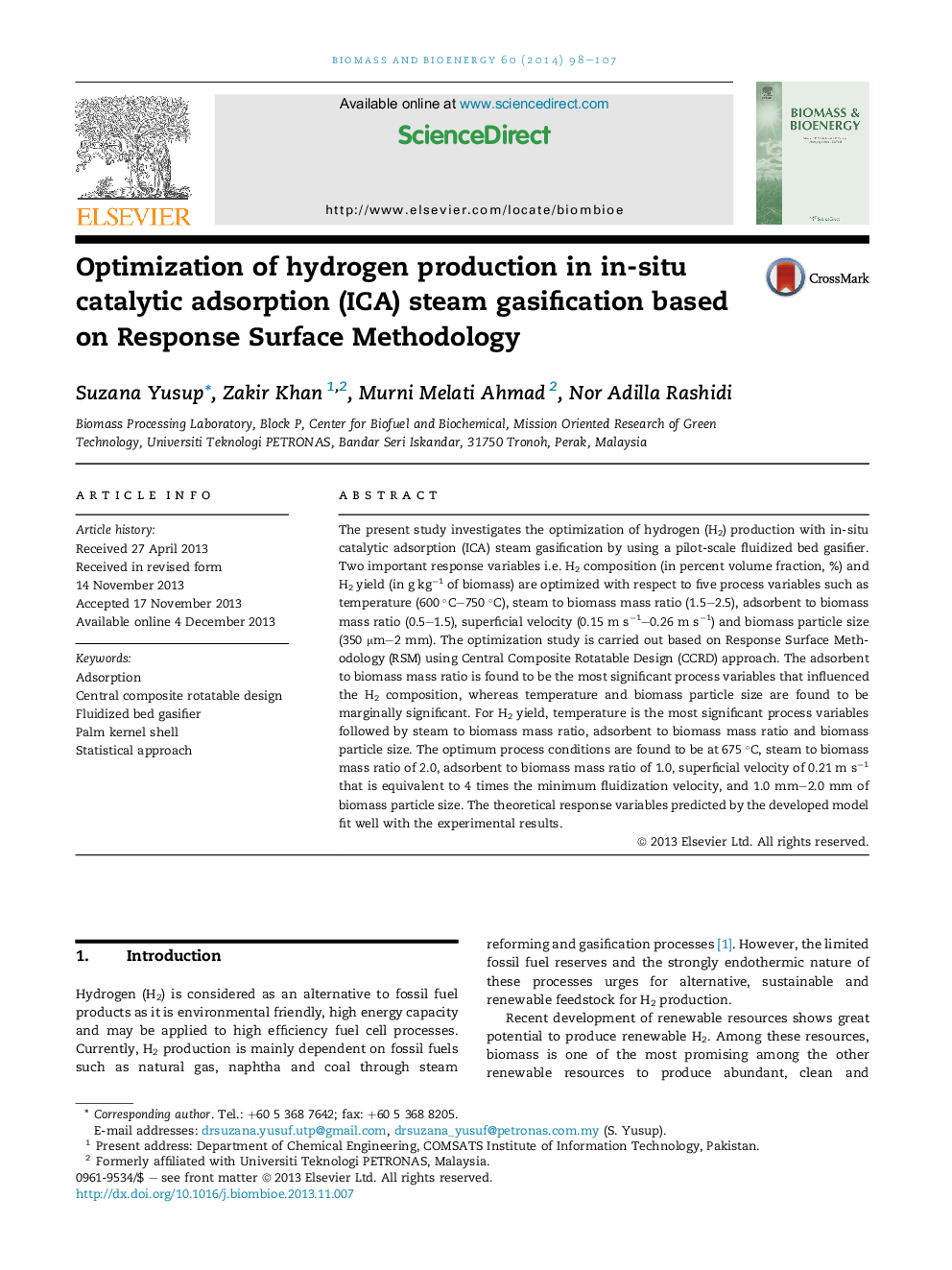| کد مقاله | کد نشریه | سال انتشار | مقاله انگلیسی | نسخه تمام متن |
|---|---|---|---|---|
| 676854 | 1459833 | 2014 | 10 صفحه PDF | دانلود رایگان |

• Optimization of H2 production in in-situ catalytic adsorption steam gasification.
• Design of experiments has been adopted using Response Surface Methodology.
• Significant variables that influenced H2 composition and yield are optimized.
• The predicted model has been validated with experimental results.
The present study investigates the optimization of hydrogen (H2) production with in-situ catalytic adsorption (ICA) steam gasification by using a pilot-scale fluidized bed gasifier. Two important response variables i.e. H2 composition (in percent volume fraction, %) and H2 yield (in g kg−1 of biomass) are optimized with respect to five process variables such as temperature (600 °C–750 °C), steam to biomass mass ratio (1.5–2.5), adsorbent to biomass mass ratio (0.5–1.5), superficial velocity (0.15 m s−1–0.26 m s−1) and biomass particle size (350 μm–2 mm). The optimization study is carried out based on Response Surface Methodology (RSM) using Central Composite Rotatable Design (CCRD) approach. The adsorbent to biomass mass ratio is found to be the most significant process variables that influenced the H2 composition, whereas temperature and biomass particle size are found to be marginally significant. For H2 yield, temperature is the most significant process variables followed by steam to biomass mass ratio, adsorbent to biomass mass ratio and biomass particle size. The optimum process conditions are found to be at 675 °C, steam to biomass mass ratio of 2.0, adsorbent to biomass mass ratio of 1.0, superficial velocity of 0.21 m s−1 that is equivalent to 4 times the minimum fluidization velocity, and 1.0 mm–2.0 mm of biomass particle size. The theoretical response variables predicted by the developed model fit well with the experimental results.
Journal: Biomass and Bioenergy - Volume 60, January 2014, Pages 98–107